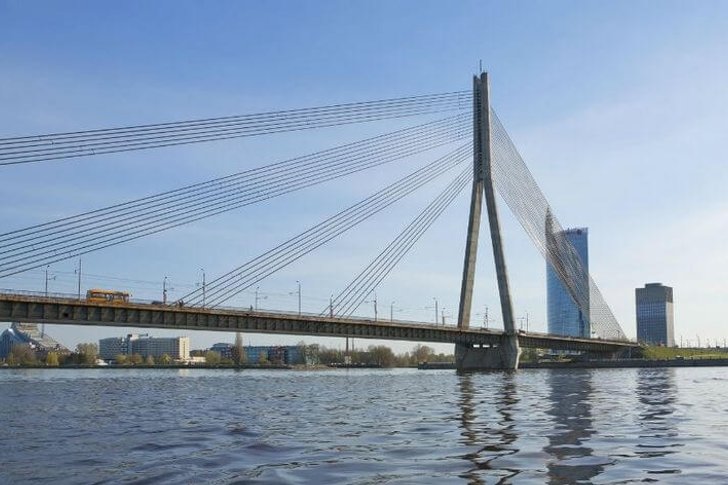The small and proud capital of Latvia is the center of the heritage of Northern Europe and an important cultural center of the entire Baltic region. People come here not so much to taste the Riga Balsam or taste the Baltic sprats, but rather for interesting excursions and educational pastime. There are many museums, galleries, historical monuments and architectural monuments in Riga.
The old town is filled with interesting cultural sights, elegant cathedrals of various religious denominations adorn the squares, and hospitable cozy taverns await tourists in the bowels of the medieval streets. Riga is a glorious city of ancient merchant guilds, whose traditions date back several hundred years and remain alive to this day.
What to see and where to go in Riga?
The most interesting and beautiful places for walking. Photos and a short description.
- Old city
- Riga castle
- Town hall
- House of the Blackheads
- House with black cats
- House of Menzendorf
- Three brothers
- Big and Small Guild
- Yakovlevsky barracks
- Convention courtyard
- Albert street
- Powder tower
- Swedish gate
- St. Peter's Church
- The Dome Cathedral
- Nativity Cathedral
- Cathedral of Saint James
- Latvian National Opera
- The building of the Latvian Academy of Arts
- Museum of the History of Riga and Navigation
- Museum of Foreign Art
- Art Museum
- Museum of the Occupation of Latvia
- Riga Motor Museum
- Riga Central Market
- Freedom Monument
- Arcadia Park
- Vermanes Park
- Riga TV Tower
- Cable-stayed bridge across the Daugava
Old city
The historical center of the Latvian capital, where the most interesting sights are located. In the depths of the winding streets of the Old Town, you can still feel the indescribable atmosphere of the Middle Ages. Traditional northern European architecture can be seen here in every structure and in every bend of the paved stone pavement.
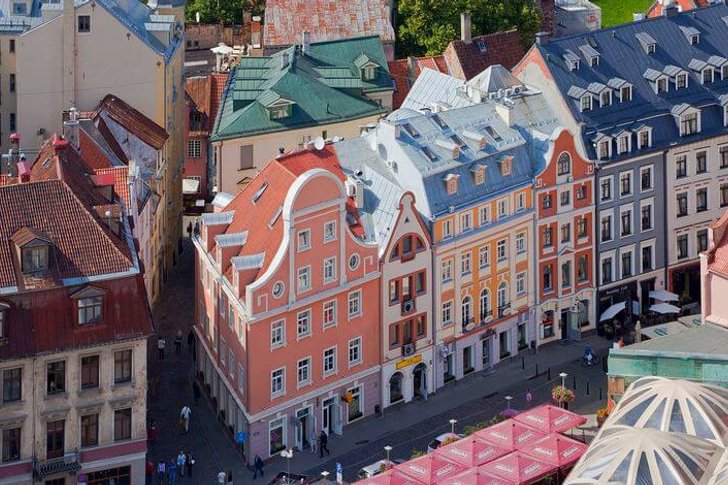
Riga castle
A 14th century castle on the banks of the Daugava (Dvina) River. It was built for the masters of the Livonian Order. As a result of numerous battles waged by the warlike brothers, the castle was repeatedly destroyed and rebuilt. From the second half of the 16th century, the building was alternately owned by Polish, Swedish and Russian crowned persons. Since 1922, the castle has been the residence of the Latvian president.

town hall
The historical building of the Riga City Hall appeared in the 13th century, but it was destroyed as a result of shelling and fire in 1941. From the town hall there were only ruins with surviving fragments of the facade. Restoration began only in the late 1990s. XX century. The new building was completed by 2003. It is an almost complete copy of the historic town hall.

House of the Blackheads
The building is a remake built in the late 1990s. in a manner typical of northern European cities. Previously, from the 14th century until 1941, a historical building with the same name was located in its place. It belonged to the merchant brotherhood of the Blackheads, who adapted it for trade and entertainment. For many centuries, the House of the Blackheads was considered one of the most beautiful buildings in Riga.
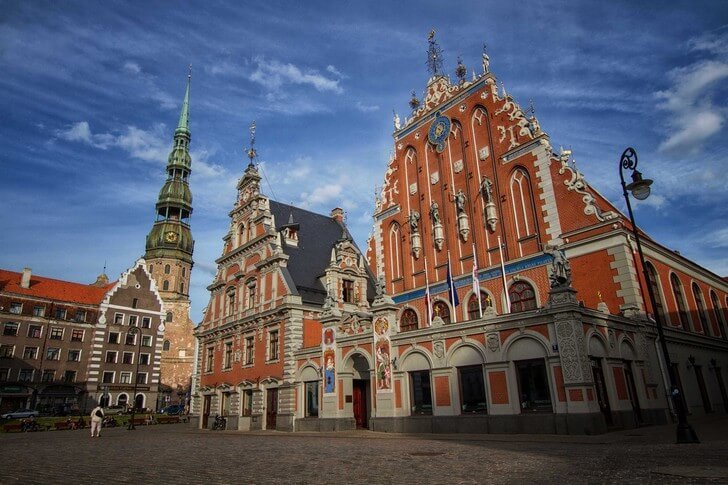
house with black cats
The house is located within the Old Town, it is one of the popular attractions of the Latvian capital. The building was erected at the beginning of the 20th century according to the project of F. Schefel. It is believed that the figures of cats on the towers appeared thanks to the idea of the merchant Blumer, the former owner of the house. The animals were turned with their backs to the windows of the merchant guild, where Blumer was refused to be received. Thus, the cunning one took revenge on the leadership of the guild.
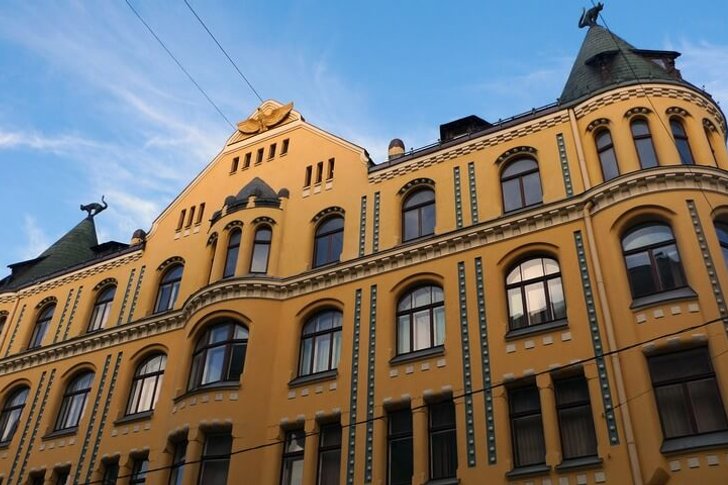
House of Menzendorf
The building of the XVII century, which houses the oldest pharmacy in the city. In addition to medicines, ink, gunpowder and cosmetics were sold here for two centuries. It is generally accepted that the recipe for the famous Riga Balsam was invented in this pharmacy. The tincture contains several hundred herbs, oils, berries and fruits as ingredients. It was used as an anesthetic.
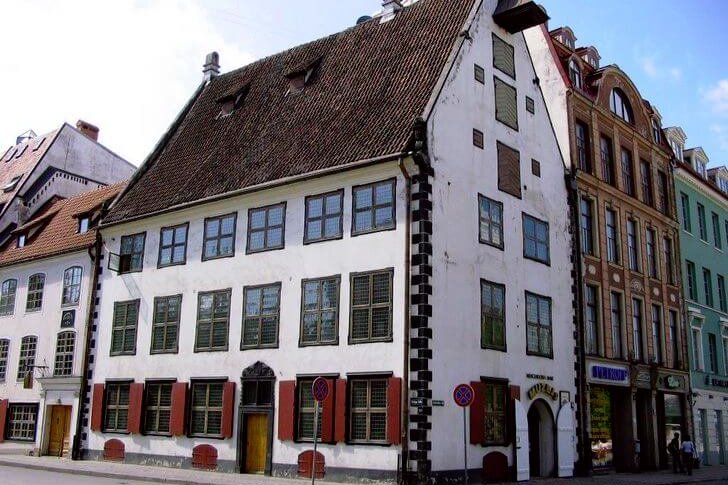
Three brothers
A complex of residential buildings in the historical center of Riga, preserved from the 15th century. It is an example of medieval town planning. The buildings are located so close to each other that it seems as if it is one building. Presumably, the "Three Brothers" were built by artisans from the same family. People still live in the houses.

Big and Small Guild
Buildings that once belonged to the most influential Riga craft and trade guilds - Big and Small. In the middle of the XIV century, these two associations left the Guild of the Holy Cross. The premises were built in the 19th century in the English Neo-Gothic style. The interiors are decorated with original chandeliers, beautiful stained-glass windows and decorative wall paintings.
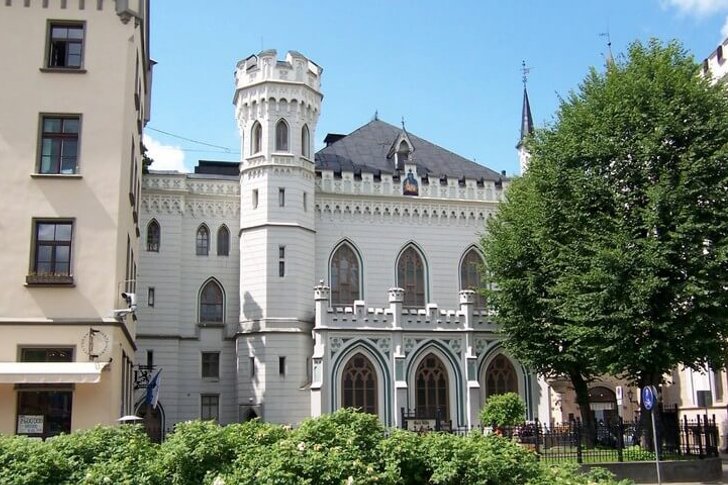
Yakovlevsky barracks
The barracks of the 17th century, built for the Swedish military by the inhabitants of Riga. After the city was conquered by Sweden, the townspeople were obliged to maintain a military garrison on their territory. Under Peter I, the barracks were demolished and rebuilt in the style of Dutch classicism. Since the 19th century, administrative services, a school, and a labor exchange have been located here. The complex is currently owned by the American Chamber of Commerce.
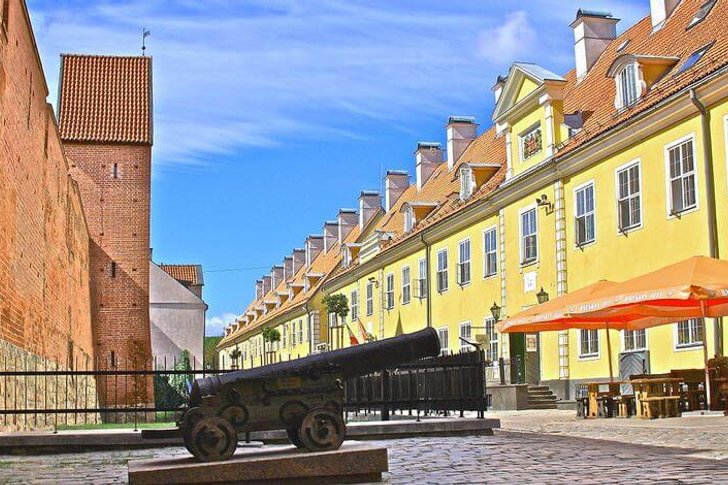
Convention courtyard
An architectural monument of the XIV-XVIII centuries, where the residence of the Order of the Sword was previously located. It is located in one of the oldest quarters of Riga. A few centuries ago there was an order castle, which was subsequently destroyed. In connection with the relocation of the monk brothers to another place, a convention was opened on the territory of the complex (in other words, a shelter).

Albert street
A small street built in an interesting architectural style called Jugendstil (the German name for Art Nouveau). Most of the structures were erected in just two years according to the designs of M. Eisenstein. Here is the Riga Art Nouveau Museum, embassies, offices, administrative buildings. Albert Street is called the "Pearl of Art Nouveau".

powder tower
Part of the ancient city fortifications of Riga, which has survived to this day in a fairly good condition. The tower appeared even before the conquest of the city by the Livonian Order, but the building was destroyed in the 17th century (but it was soon restored). During the reign of the Russian Empire, it was decided to destroy the entire fortification system of Riga, and leave the powder tower as a memory.

swedish gate
The gate created at the beginning of the 18th century during the Swedish occupation of Riga. Now this building is a recognized architectural monument of Latvia and all of Europe, as it has survived to this day almost in its original form. The Swedish garrison was stationed not far from the gate, so the passage was used mainly by the military.
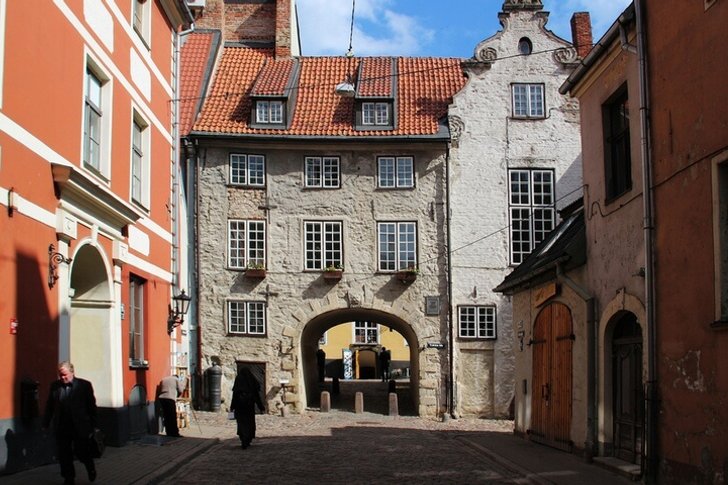
St. Peter's Church
Medieval temple, famous for its high bell tower. The height of the tower is 123.5 meters, the spire is 64.5 meters. The facade of the bell tower is decorated with an old clock, and the top is crowned with a weather vane - a golden cockerel. The tower of St. Peter's Church dominates the buildings of the historical center of Riga, stands out against the background of lower buildings. Near the temple there is a monument to the Bremen Town Musicians.

The Dome Cathedral
Riga Cathedral of the 13th century, one of the largest churches in the entire Baltic region. The cathedral belongs to the Evangelical Lutheran Church of Latvia. The building is an example of the transition from medieval Romanesque to Northern European Gothic. Separate fragments of the interior decoration are made in the Renaissance style. One of the main attractions of the temple is a grandiose organ 25 meters high, consisting of almost 7 thousand pipes.
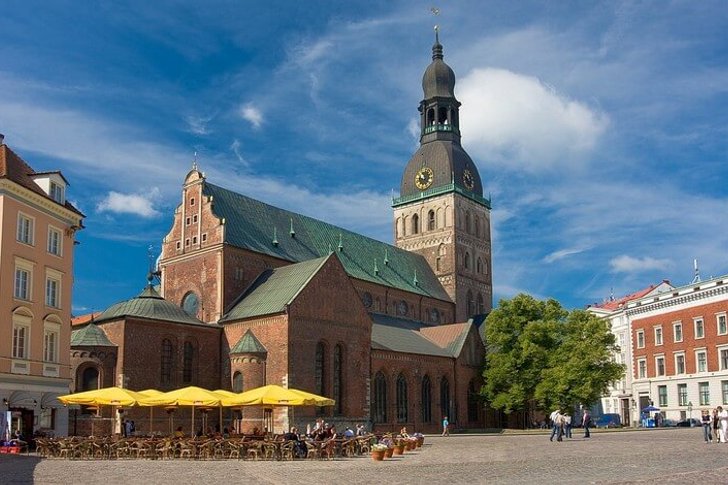
Nativity Cathedral
Cathedral of the Orthodox Church of Latvia. Funds for its construction were allocated by the Russian Emperor Alexander II, and the autocrat also donated 12 bells to the future temple. In the 60s. In the 20th century, the interior decoration was almost completely destroyed; a cafe, a planetarium and other institutions were placed on the territory of the cathedral. Restoration began in the 90s. after the collapse of the USSR.
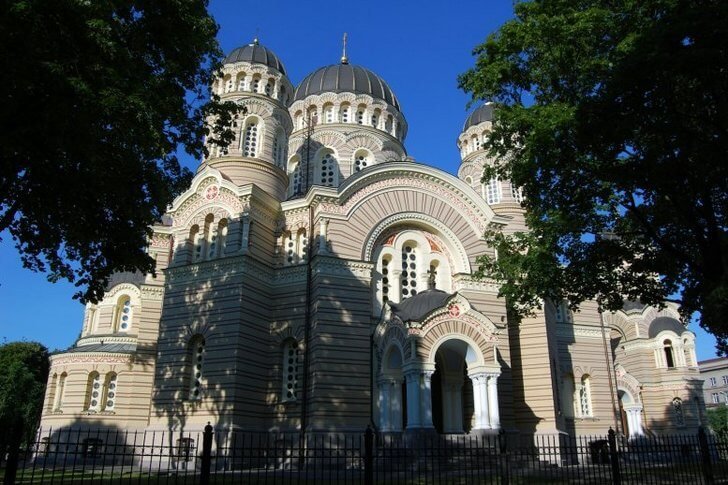
Cathedral of Saint James
The main Catholic church in Riga, first mentioned in documents from the beginning of the 13th century. The building is made of brick, it is an example of the transition from the Romanesque style to the Gothic architectural style. During the Church Reformation, the cathedral survived many pogroms and arson, as a result of which many cultural values were lost.
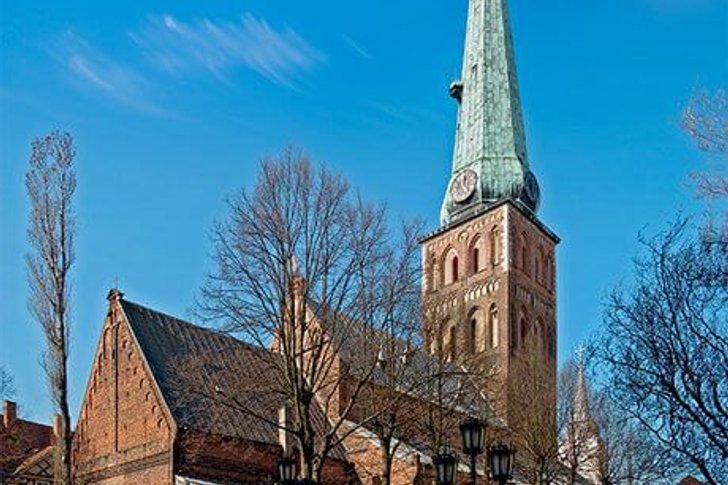
Latvian National Opera
The most famous and eminent musical theater of the country, where leading soloists perform and world masterpieces of ballet and opera art are staged. The stage opened in 1919 with a production of The Flying Dutchman by R. Wagner. Every year, the opera hosts up to 200 performances, of which five to seven are premieres. Both classical productions and modern interpretations of operas created by young authors are equally successful.

The building of the Latvian Academy of Arts
An architectural monument of the early 20th century in the historical center of the Latvian capital. First, a German gymnasium was located here, then a commercial school, only by the middle of the 20th century the Latvian Academy of Arts was opened. The construction project was developed by W. Boxlaff. According to the architectural idea, the complex should symbolize the strong connection of Riga with the Hanseatic League (trade and political union of the cities of North-Western Europe).
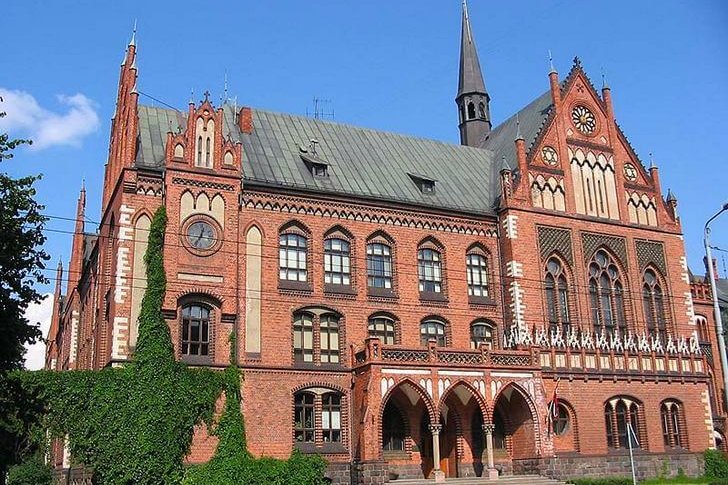
Museum of the History of Riga and Navigation
The museum is located on the territory of the architectural ensemble of the Dome Cathedral. This is one of the oldest expositions in Latvia, founded in the 18th century. Collections collected by various historical and archaeological communities of the Baltics are exhibited here. The museum funds contain more than half a million exhibits. They are located in the halls according to themes and chronology.

Museum of Foreign Art
Art Gallery of Latvia, which contains the most impressive exposition, from ancient Egyptian art to the latest modern period. The canvases of representatives of German romanticism, Belgian and Dutch schools are stored and exhibited here. It will also be interesting to look at the artifacts of the Ancient World, and art objects of Medieval Europe.
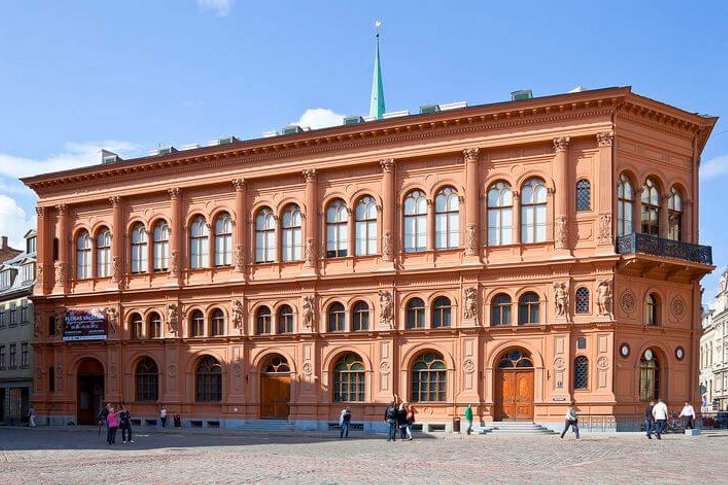
Art Museum
The official name of the gallery is the Latvian National Museum of Art. More than 52 thousand exhibits are exhibited here: extensive collections of Latvian masters, paintings by European and Russian artists. Among the famous paintings are works by N. Roerich, J. Rosenthal, I. Aivazovsky, V. Purvitis. Temporary exhibitions of famous masters of the brush are constantly organized on the territory of the gallery.
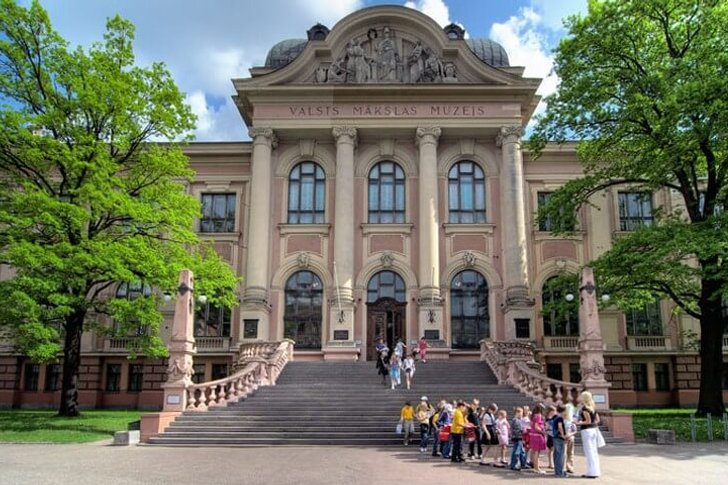
Museum of the Occupation of Latvia
Museum dedicated to the period of Latvian history from 1940 to 1991 The main part of the exposition is devoted specifically to the Soviet period of Latvian history, the period of 1941-1944. - German occupation. The exposition of the museum puts the personality of Stalin and Hitler on the same level, and actually equates Nazi Germany and its destructive activities with the USSR. Because of this, some visitors evaluate the collections of the Museum of the Occupation very ambiguously.

Riga Motor Museum
One of the best car museums in Europe. The basis of the exposition is the collection of the Latvian Antique Car Club. The museum was created thanks to the efforts of enthusiasts who were passionate about the restoration of old cars and dreamed of a separate building where the results of their work could be placed. The first models of Moskvich, Fiat, Mercedes, BMW and many other well-known and not so famous brands are exhibited here.

Riga Central Market
A real "gastronomic paradise" of the Latvian capital, where you can buy the freshest and most delicious products. The market is divided into five pavilions: meat, vegetable, fish, dairy and gastronomic. On the territory outside the pavilions, they sell flowers, clothes and everyday items. All kinds of smoked meats are in particular demand among tourists: poultry, an endless assortment of fish, sausages and other delicacies.

Freedom Monument
Monument erected in honor of the independence of Latvia in 1935. It is a sculpture of a woman standing on a high pedestal. The woman holds three stars in her hands, symbolizing the historical regions of Latvia. At the foot of the pedestal is a sculptural group consisting of historical characters from different periods. The monument is located on one of the central streets not far from Old Riga.

Arcadia Park
One of the most picturesque and popular landscape parks in Riga, founded on the territory of a private garden in the 19th century. Arcadia Park has gone through several reconstructions - at first it was an exotic garden with unusual plants and greenhouses where rare types of palm trees were grown, then it turned into an entertainment complex and eventually became a public city park for walking and relaxing.
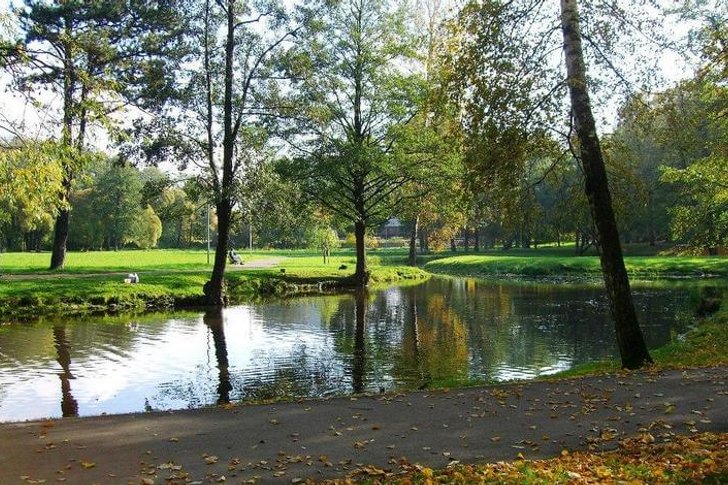
Vermanes Park
City park, equipped at the expense of the widow Anna Verman and bearing the name in her honor. At the beginning of the 19th century, this place was a swampy area, which brought a lot of anxiety and inconvenience to the inhabitants of Riga. Then the authorities had an idea to drain the swamp and set up a public park, and a wealthy widow donated a large sum of money for this good event.
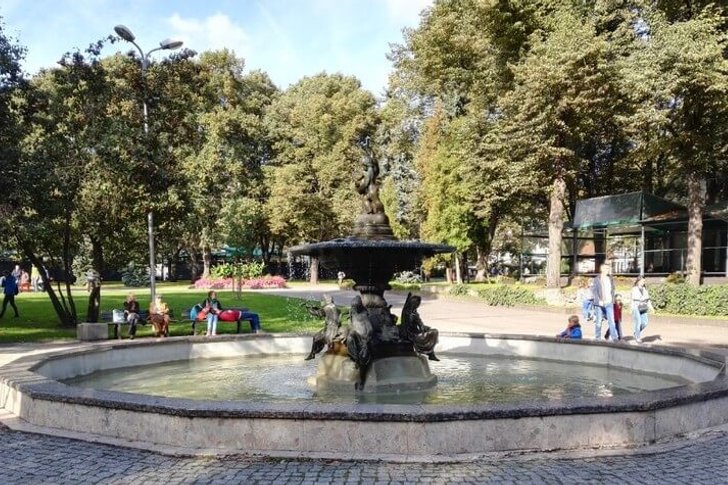
Riga TV Tower
The TV and radio broadcasting tower with a height of 368.5 meters is the tallest building of its kind in the entire Baltic region and the third tallest in Europe. The tower is located on the island of Zakusala. Inside the structure, at a height of 99 meters, there is an observation deck from where you can admire the panorama of the Gulf of Riga and the views of the city itself. The Riga TV Tower was built in the period 1979-1986.
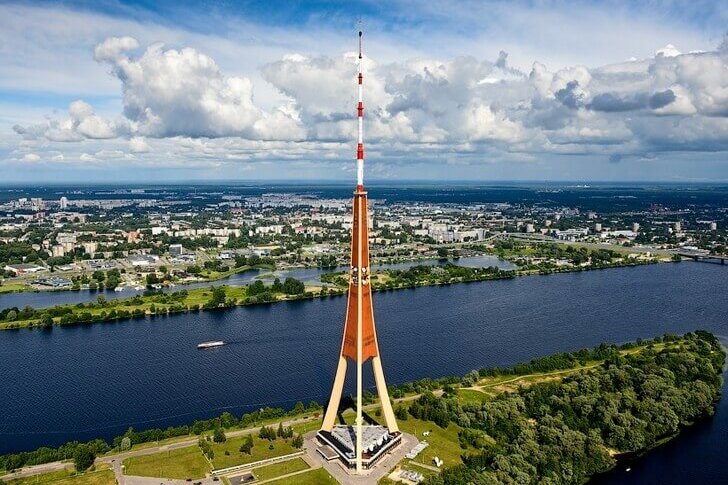
Cable-stayed bridge across the Daugava
An elegant engineering structure, one of the symbols of dynamic modern Riga. The bridge was built in 1981. At that time, it was the longest hanging span over the river in the Soviet Union. The length of the main pontoon is more than 300 meters, the total width is more than 28 meters. The bridge carries traffic of cars and public transport, as well as trolleybus lines.
